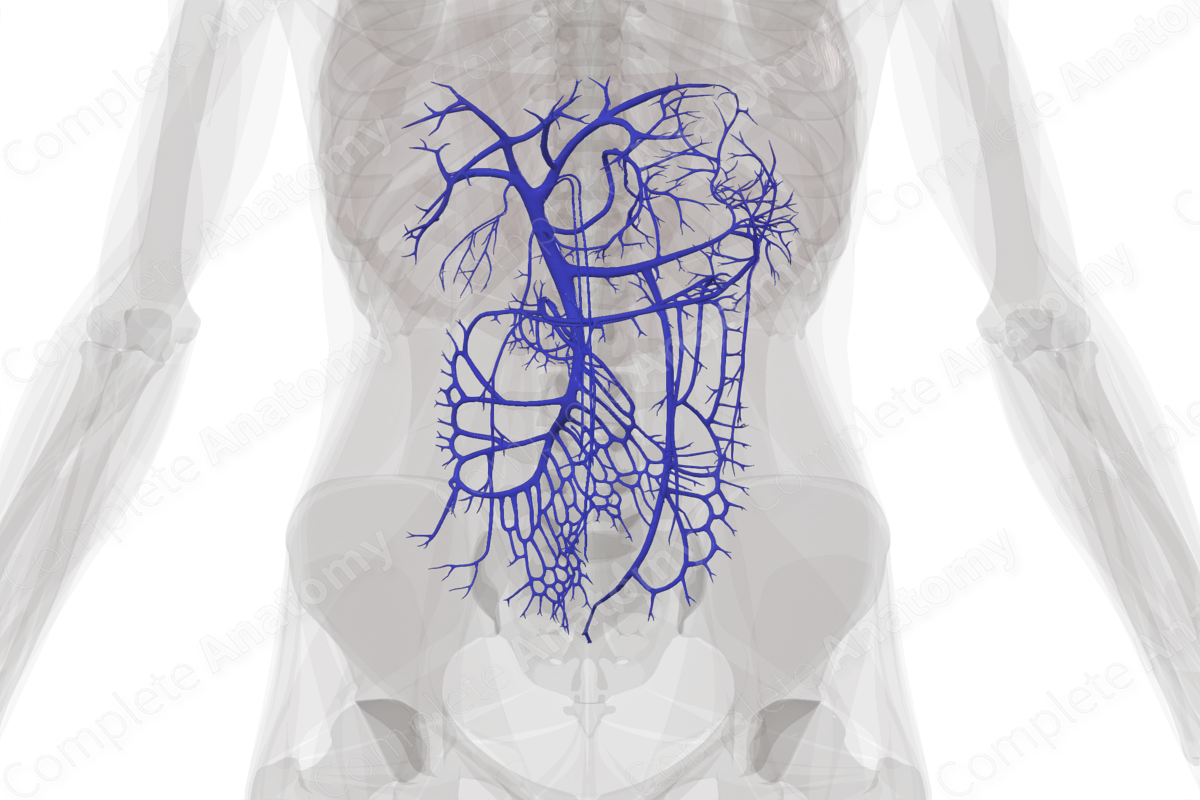
Description
The nutrient-rich venous blood is collected from the gastrointestinal tract via the superior mesenteric, splenic, and inferior mesenteric veins. The inferior mesenteric vein typically drains into the splenic vein, which then unites with the superior mesenteric vein to form the hepatic portal vein. As the hepatic portal vein travels towards the liver, it receives additional tributaries including the left and right gastric veins, cystic veins, paraumbilical veins, and the posterior superior pancreaticoduodenal vein. Thus, the hepatic portal vein receives blood from the distal esophagus to proximal rectum.
The hepatic portal vein passes into the liver through the porta hepatis and branches into smaller veins until ultimately transitioning to the sinusoidal capillaries within the liver. These sinusoids are the second set of capillaries that this blood will pass through prior to returning to the heart. After filtering the nutrient-rich venous blood through the sinusoidal capillaries, the blood will pass through progressively larger hepatic veins, which will ultimately open into the inferior vena cava.
List of Clinical Correlates
- Cirrhosis
- Portal Hypertension
Learn more about this topic from other Elsevier products





